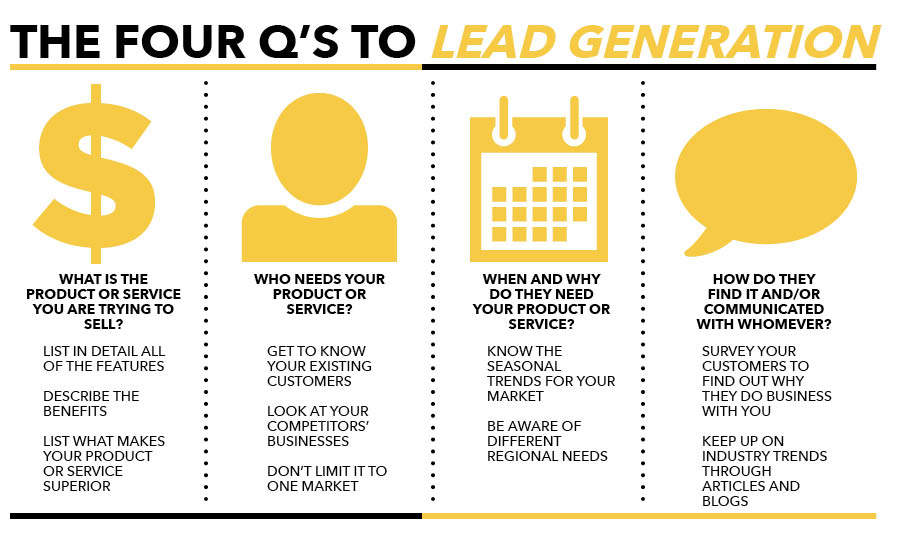 Are you preparing to launch a lead generation campaign for your product or service? If so, you have probably reviewed some of the thousands of articles addressing these campaigns; encouraging you to generate, capture, evaluate, route, qualify, nurture, analyze and follow-up on leads. However, there are four questions you should answer before you begin any lead generation campaign.
Are you preparing to launch a lead generation campaign for your product or service? If so, you have probably reviewed some of the thousands of articles addressing these campaigns; encouraging you to generate, capture, evaluate, route, qualify, nurture, analyze and follow-up on leads. However, there are four questions you should answer before you begin any lead generation campaign.
What Are You Selling?
You know your product or service inside out. You understand every nuance, every nut and bolt involved. That is good, however if you can’t explain it to a potential customer, all that knowledge is of limited value.
It is vital to any lead generation campaign to create descriptions that are simple, clear and concise, and describe your product or service in language anyone can fully comprehend. It might be of the greatest value to a hydraulic engineer, but the person in charge of acquisitions might not understand terms such as accumulator or cavitations.
- Create a form including columns labeled name, description, features, benefits, and unique selling points.
- Write a description including size, shape, color, dimension, materials, length, width, etc.
- List in detail all the features. Does it have pockets? Is it reversible?
- Describe the benefits – be enthusiastic but do not exaggerate. Benefits can be difficult to express and will require some creativity.
- List what makes your product or service different and superior. Research your competition to determine your unique selling points.
From this, create a description for a lead generation campaign that will convince even the most skeptical customer your product or service is the best.
Who Needs It?
- Study your existing customer base for a good idea of who needs what you have to offer. It may be obvious that hydraulic engineers need your product or service, but think about other areas that are similar, or even slightly related. Maybe a well-drilling company would benefit from what you offer. Or a city landscaping department?
- Study the websites of your competitors and look for hints of where they are marketing. They may have touched on a source of customers you have not considered.
- Do not limit lead generation efforts to one single market.
When and Why Do They Need It?
- Some products appear to be needed more at one time than at others. There may be a large seasonal market, or only be needed when some. These factors would prompt lead generation efforts at those specific times.
- Additionally, be aware of differing regional needs. A poinsettia plant may have a limited seasonal demand in northern New England; however it will have year-round appeal as a landscaping plant in southern areas.
- By expanding your view of who needs your product or service, you will find additional times that will work for lead generation campaigns.
How Do They Find It?
- A very effective method for determining how potential customers look for, find and engage with businesses is through your existing customers. Email a survey asking for details on what made them elect to work with your company. Encourage responses by offering something in exchange for their completed survey; a free report or a future discount.
- Study your competitors’ websites and observe their lead generation campaigns.
- Read articles related to your business, visit interactive blog pages and question-and-answer sites.
- Combine this information with your customer surveys to understand how customers search for your products or services.
Once you have answered these four questions you will be ready to proceed with your lead generation campaign – and your efforts will be much more successful and profitable.




